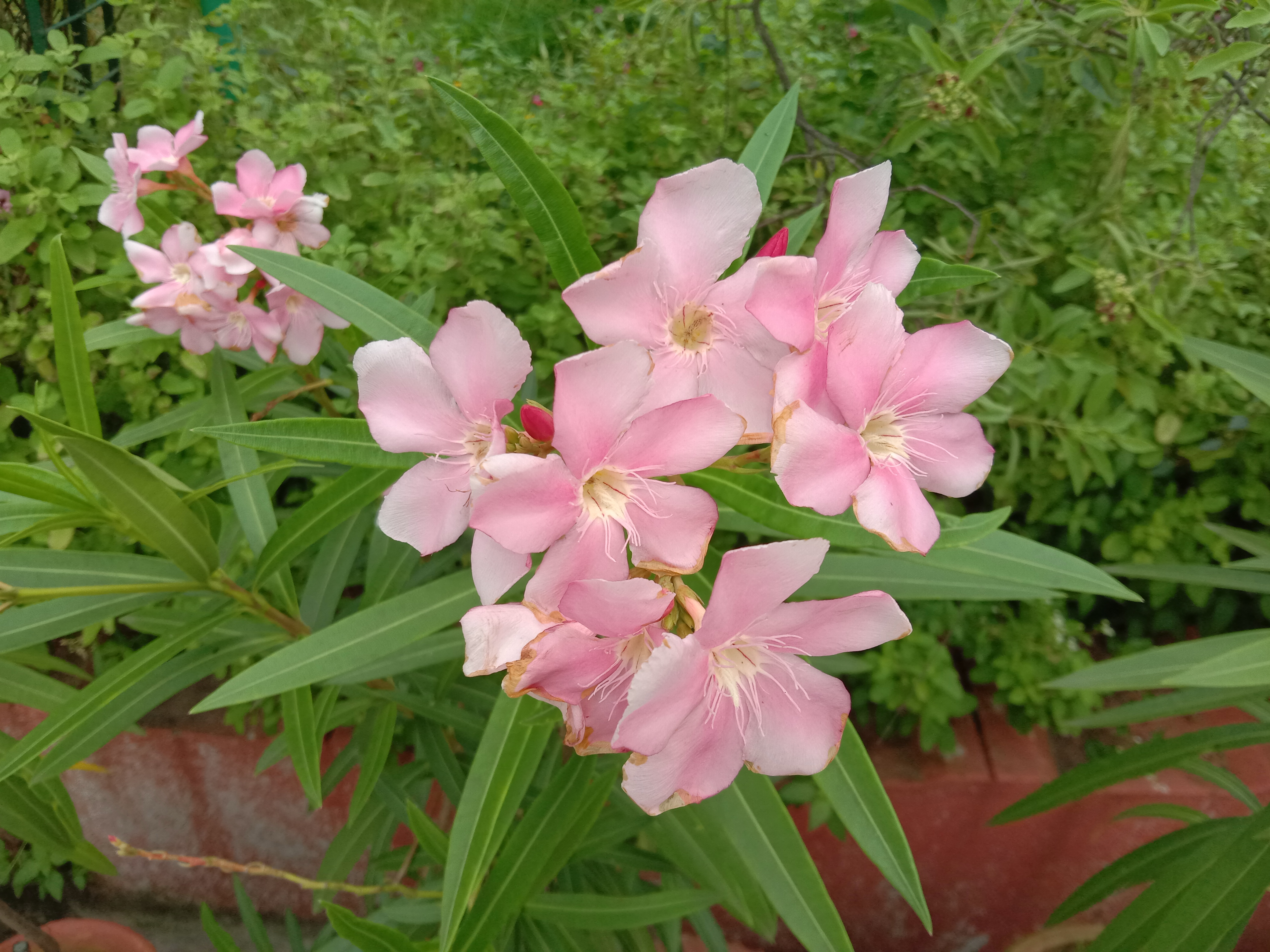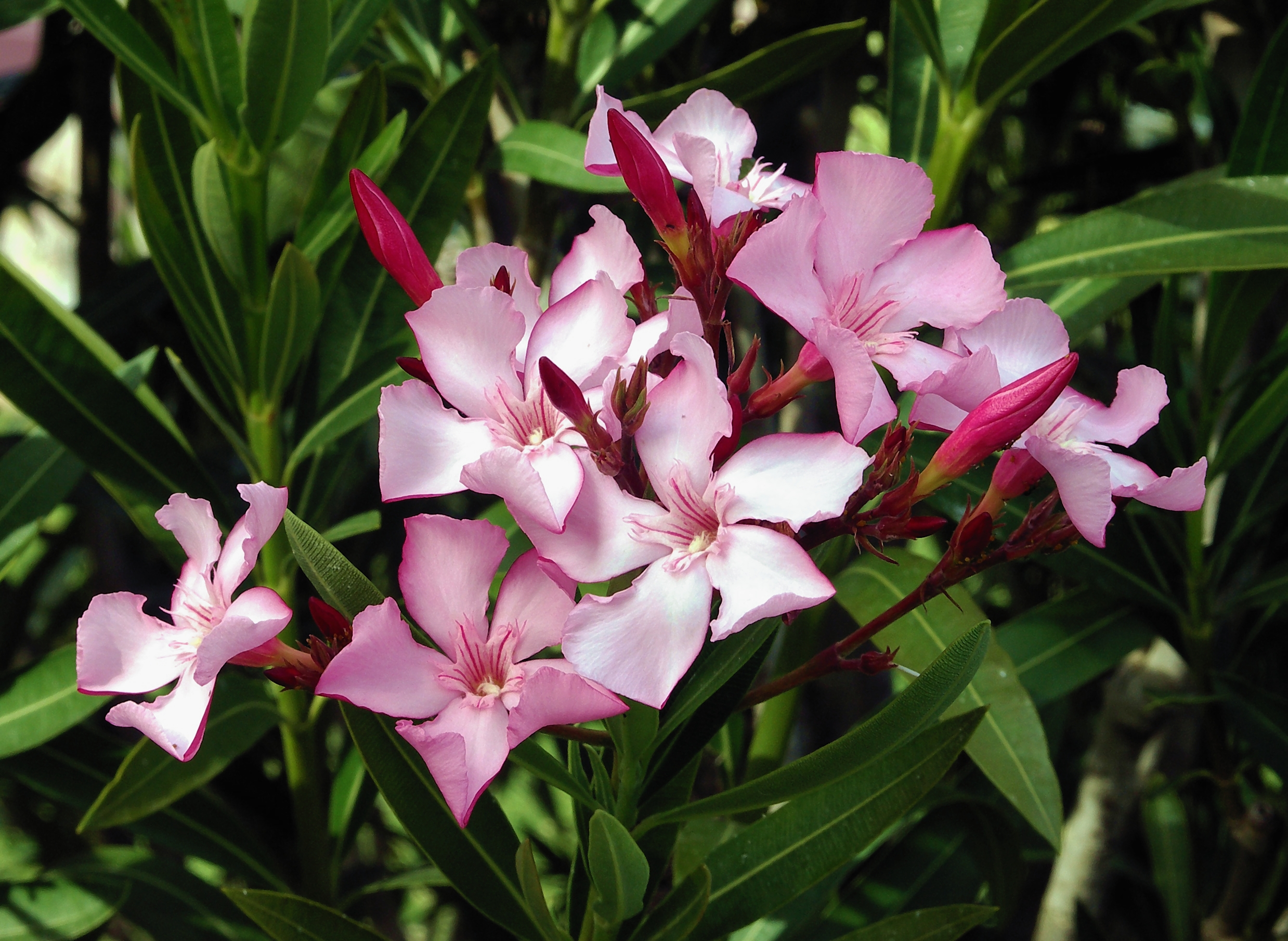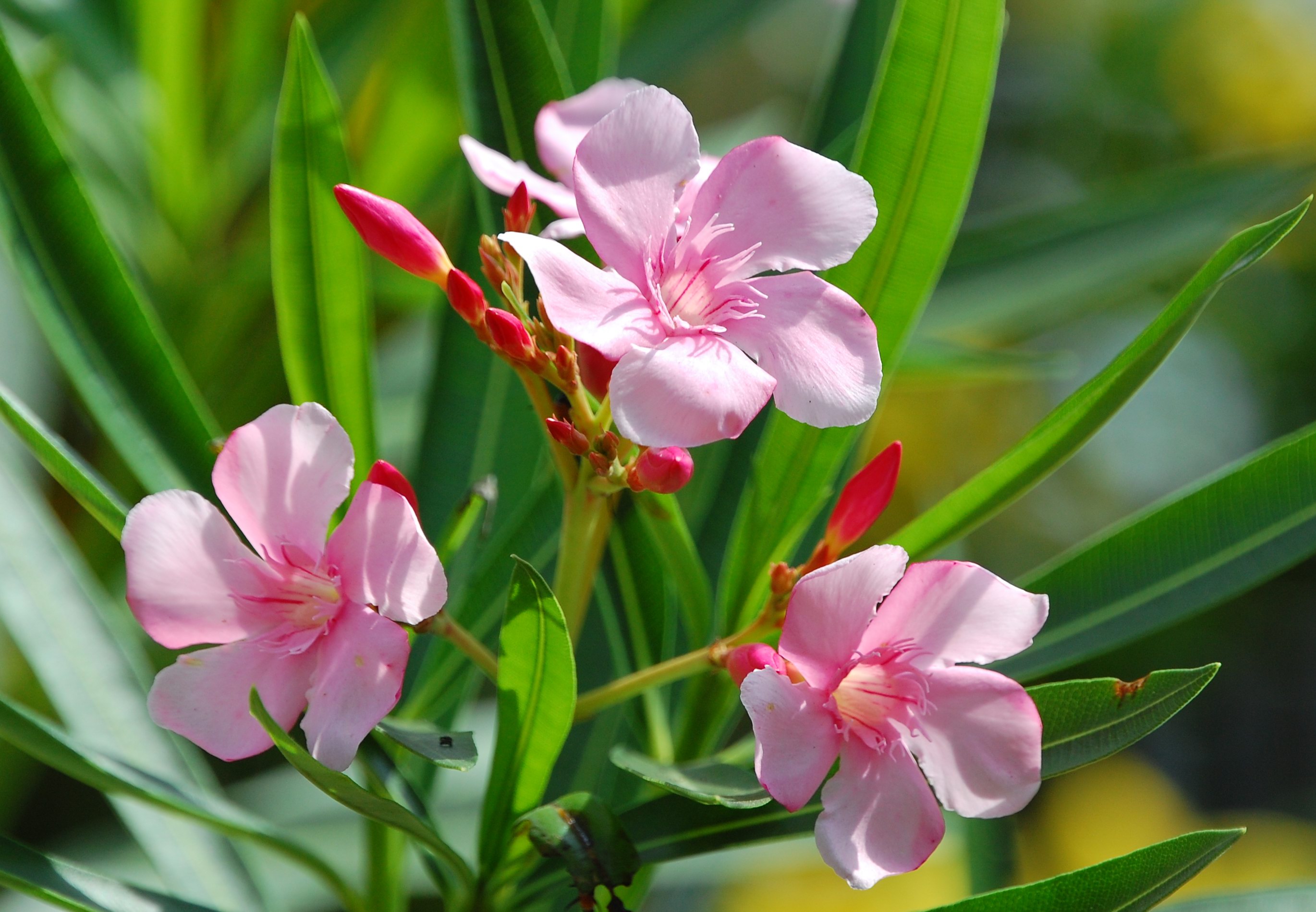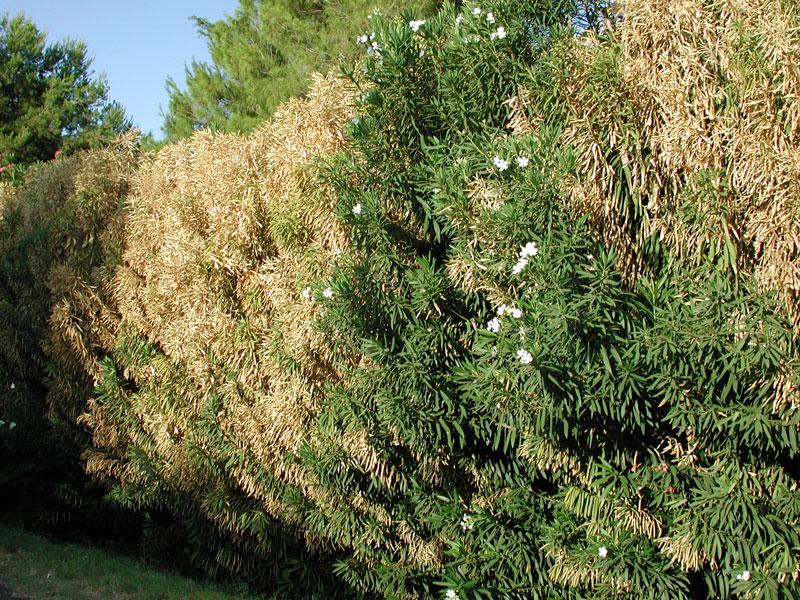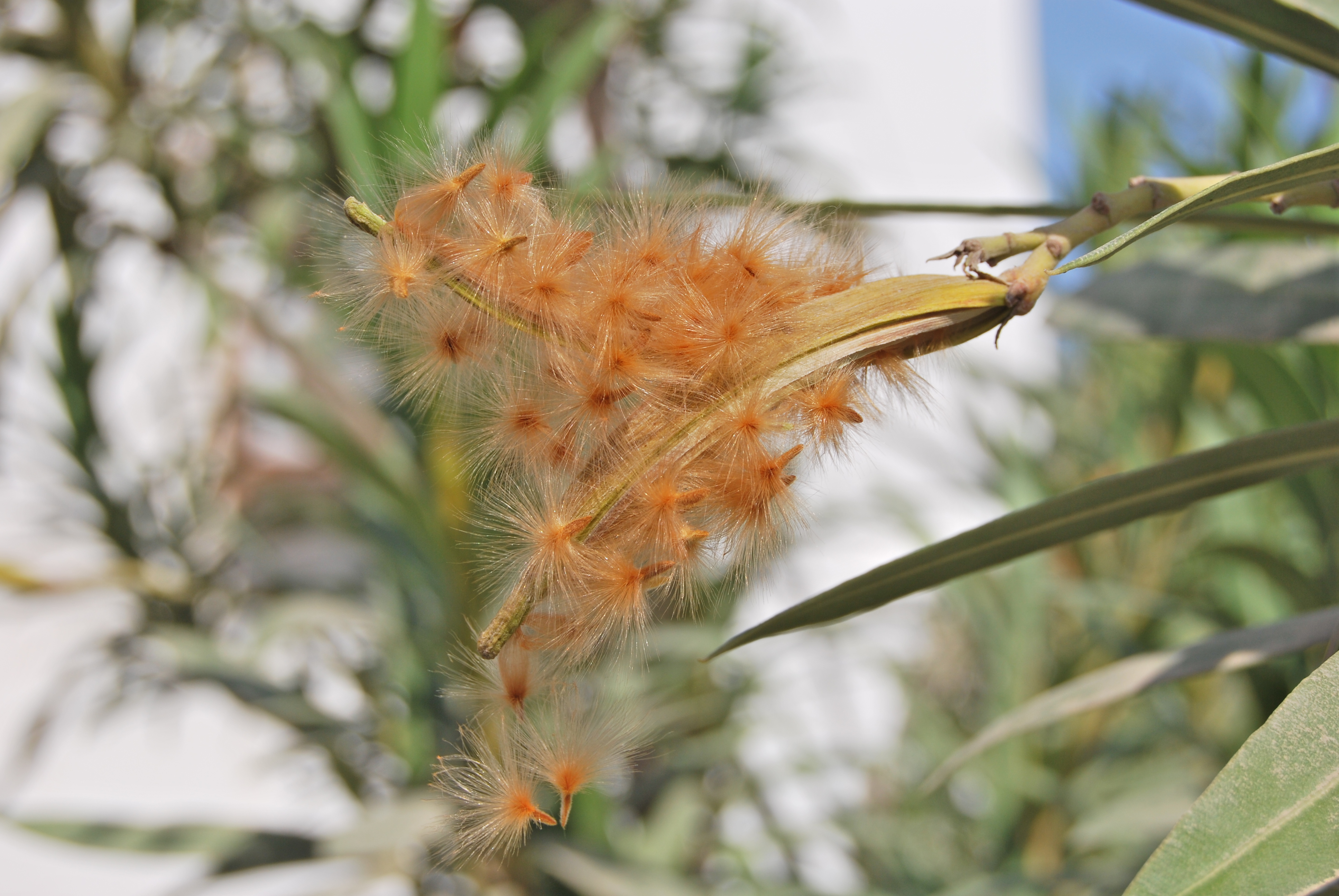Oleander
Enlarge text Shrink text- Work cat.: Pagen, F.J.J. Oleaners, 1988:p. 3 ("The present paper, devoted to the genus Nerium L., covers taxonomic and other aspects of the wild oleander and of the oleander cultivars ... The genus Nerium L. is considered to be monotypic, its single species being Nerium oleander L.") p. 7 (Synonyms: N. indicum, N. latifolium, N. floridum, N. lauriforme, N. odorum, N. verecundum, N. carneum, N. flavescens, N. splendens, N. thyrsiflorum, N. mascatense, N. kotschyi) p. 12 ("Vernacular names: English: oleander, rose bay (USA; another plant called rose bay is Epilobium angustifolium), rose laurel")
- Mabberley, D.J. The plant-book, 1987:p. 397 (Nerium oleander: oleander, rose-bay)
- Polunin, O. Flowers of Europe, 1969:p. 320 (Nerium oleander: oleander)
- Web. 3(oleander : a plant of the genus Nerium; specif: an ornamental evergreen shrub (Nerium oleander))
- Hortus 3:p. 765 (Nerium oleander: common oleander; rose-bay, Sweet-scented oleanders ... are often listed as N. indicum or N. odorum)
- Sunset new western garden book, 1979:p. 382 (Nerium oleander: oleander)
Nerium oleander ( NEER-ee-əm), commonly known as oleander or rosebay, is a shrub or small tree cultivated worldwide in temperate and subtropical areas as an ornamental and landscaping plant. It is the only species currently classified in the genus Nerium, belonging to subfamily Apocynoideae of the dogbane family Apocynaceae. It is so widely cultivated that no precise region of origin has been identified, though it is usually associated with the Mediterranean Basin. Nerium grows to 2–6 metres (7–20 feet) tall. It is most commonly grown in its natural shrub form, but can be trained into a small tree with a single trunk. It is tolerant to both drought and inundation, but not to prolonged frost. White, pink or red five-lobed flowers grow in clusters year-round, peaking during the summer. The fruit is a long narrow pair of follicles, which splits open at maturity to release numerous downy seeds. Nerium is a poisonous plant but its bitterness renders it unpalatable to humans and most animals, so poisoning cases are rare and the general risk for human mortality is low. Ingestion of larger amounts may cause nausea, vomiting, excess salivation, abdominal pain, bloody diarrhea and irregular heart rhythm. Prolonged contact with sap may cause skin irritation, eye inflammation and dermatitis.
Read more on Wikipedia >
 Topic
Topic



